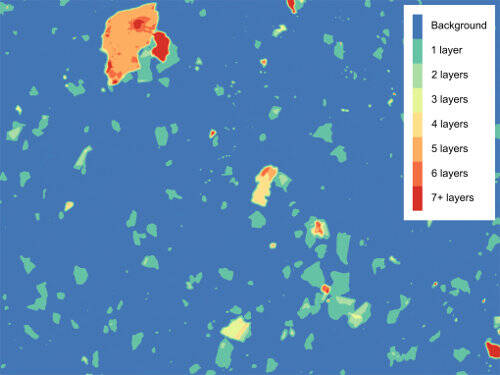Press Release: Measuring the Thickness of the Thinnest
| May 4, 2018 — By Will Dickinson |
« prev |All Stories| next » |
Measuring the Thickness of the World’s Thinnest and Strongest Material

Researchers at William & Mary, with collaborators from the University of Connecticut, have discovered a way of measuring the thickness of the world’s thinnest materials with unprecedented throughput, as described in a new article in peer reviewed Royal Society of Chemistry journal Nanoscale (download).
Graphene, atomically thin layers of carbon more than one hundred thousand times thinner than a sheet of paper, is the world’s strongest material, and has many other unique properties. However, limitations in mass production of this material with reproducible quality have limited its use in consumer products. Because the material is so incredibly thin, it is hard to see, and only the most advanced imaging techniques can detect it. The new method developed at William & Mary, with support from the National Science Foundation DMREF program (grants DMREF-1534428 and DMREF-1535412), enables the simultaneous measurement of the thickness of thousands of sheets of the ultrathin wonder material with atomic precision — all that is needed is a simple optical microscope.
Ordinarily, a standard microscope can’t provide a picture with enough resolution to determine the size and thickness of thousands of atomically thin nanosheets at the same time. However, the technique invented by William & Mary professor Hannes Schniepp and graduate student Will Dickinson uses computer code to correct for some of the shortcomings of optical imaging. Each color in their images indicates a different number of atomic layers, allowing for easy identification (see figure). With their colleagues at the University of Connecticut, graduate student Harish Kumar and professor Douglas Adamson, the researchers hope to use the dramatic reduction in time and expense to drive forward the production and application of these fascinating materials. The new approach has potential for countless technologies such as more efficient solar cells, faster electronics and lighter vehicles.

